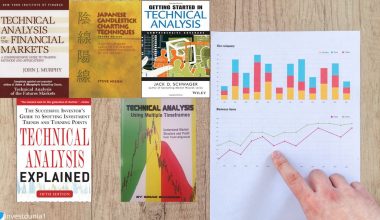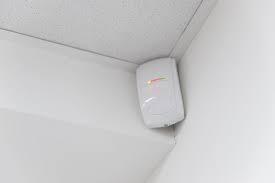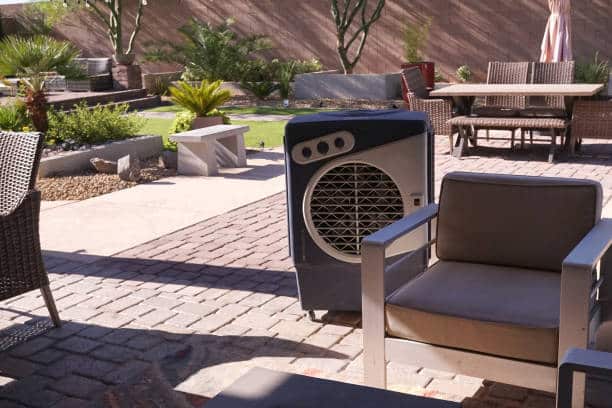You toast bread every morning, right? Have you ever considered how much it’s costing you in electricity bills or how your toaster determines when your toast is perfectly done?
Research says the average American household toasts about 2,000 slices of bread annually. However, many do not understand how it works. If you recently bought a toaster or have one at home, this article answers your question ‘ How does electric toasters work?’
Discover how much you can save on electricity bills if you use electric toasters correctly in this article.
Table of contents
- What is an Electric Toaster?
- How Do I Use Electric Toasters?
- How Does Electric Toasters Work?
- How much electricity does a toaster use?
- Does an electric toaster use AC or DC?
- What is the voltage of an electric toaster?
- Does a toaster use electricity when turned off?
- How does a toaster know when to pop ?
- Frequently Asked Questions
- Conclusion
- References
- Recommendations
What is an Electric Toaster?
An electric toaster is a small kitchen appliance that uses radiant heat to brown sliced bread into toast. It is typically powered by electricity and has two or four slots to hold the bread slices.
They were first patented in the late 1800s, and they have become increasingly popular in recent years. Electric toasters are a convenient and affordable way to make toast. They are easy to use and clean, and they can produce perfectly toasted bread every time.
Read Also: How Do Motion-Sensing Lights And Burglar Alarms Work?
How Do I Use Electric Toasters?
To use an electric toaster correctly, you should be able to identify its parts. Basically, every toaster has a heating element, which is typically made of nichrome wire. This is a metal alloy that is known for its high resistance to electricity.
It also has a control switch, which turns the heating element on and off. A timer, which determines how long the bread is toasted, and a pop-up mechanism, which raises the toast out of the toaster when it is done.
Follow the steps below to use an electric toaster:
- Plug the toaster into an outlet.
- Place the bread slices in the toaster slots.
- Lower the lever or push the button to start the toasting process.
- The heating element will turn on and begin to heat up.
- The timer will start to count down.
- Once the timer reaches zero, the heating element will turn off and the toast will pop up
Read Also: How Do Sewer And Septic Systems Work?
How Does Electric Toasters Work?
Once an electric toaster is turned on, there are rows of glowing red wires facing the bread. When electricity flows through these wires, they get hot and then fire their heat toward the bread like dozens of miniature radiators.
Basically, when electricity flows through a wire, energy is transmitted from one end of the wire to another. The movement of energy is a bit like water flowing down a pipe. So, for an electric toaster, here is what happens once you plug it.
When you plug the toaster into an outlet, a circuit is completed, allowing electricity to travel through the toaster’s internal wiring. This electrical energy, measured in amperes (A) or milliamperes (mA), is the driving force behind the toasting process.
#1. The Filaments: Heating Elements

As electricity flows through the toaster, it encounters a series of thin filaments, typically made of nichrome, a metal alloy known for its high resistance to electrical current.
As the current passes through the filaments, it collides with the electrons in the metal atoms, transferring energy and causing the atoms to vibrate more rapidly.
This increased atomic vibration manifests as heat, and the filaments glow red hot, reaching temperatures of around 1,800 degrees Fahrenheit (982 degrees Celsius).
#2. Heat Radiation: The Toast-Making Mechanism

The glowing filaments act as miniature radiators, emitting infrared radiation, a form of electromagnetic radiation that lies just beyond the visible spectrum.
This invisible heat radiation travels in straight lines, transferring energy to the bread slices placed in the toaster slots.
The infrared radiation penetrates the bread’s surface, causing the water molecules within to vibrate and heat up.
As the water molecules evaporate, they leave behind starch molecules, which undergo a process called caramelization. Caramelization is a chemical reaction that breaks down the starch molecules, producing the golden brown color and slightly sweet flavor associated with toasted bread.
#3: Even Heat Distribution: A Toast to Uniform Toasting

To ensure even toasting on both sides of the bread slices, the toaster’s design incorporates filaments on each wall of the toaster. As it radiates from the filaments, it envelops the bread slices from both sides, ensuring consistent toasting across the entire surface.
The steady supply of heat from the filaments rapidly cooks the bread, drying out the surface and transforming it into the crispy, golden toast we enjoy.
Read Also: How to Run Your House Solely on Solar Power | Starter Guide
How much electricity does a toaster use?
The amount of electricity a toaster uses depends on its wattage, which is typically between 600 and 1200 watts. A 600-watt toaster will use 0.6 kilowatt-hours (kWh) of electricity per hour of operation, while a 1200-watt toaster will use 1.2 kWh per hour.
The amount of electricity used to toast a piece of bread also depends on the thickness of the bread, the desired level of toastiness, and the efficiency of the toaster. A thin slice of bread that is only lightly toasted will use less electricity than a thick slice that is toasted to a dark brown color.
To calculate the energy consumption of a toaster, you can use the following formula:
Energy Consumption (kWh) = Power (W) × Time (hours).
For example, if a toaster uses 1000 watts and you toast two slices of bread for 3 minutes (0.05 hours), the energy consumption would be:
Energy Consumption (kWh) = 1000 W × 0.05 hours = 0.05 kWh
From the formula above, if your electricity rate is 12 cents per kWh, the cost to toast two slices of bread for 3 minutes would be $0.006.
Does an electric toaster use AC or DC?
Electric toasters use alternating current (AC) electricity. AC electricity is the type of electricity that is delivered to homes and businesses by the power grid.
DC electricity, on the other hand, is the type of electricity that is used in batteries and other electronic devices.
The reason why electric toasters use AC electricity is because AC electricity is more efficient to transmit over long distances. This is because AC electricity can be easily transformed from a high voltage to a low voltage, and vice versa.
Read Also: 10 Reasons Why Your Air Conditioner Stopped Working & Solution
What is the voltage of an electric toaster?
The voltage of an electric toaster typically ranges from 110 to 240 volts. This is because toasters are designed to be used with the standard household electricity supply, which is either 110 volts in North America or 220-240 volts in most other parts of the world.
The voltage of a toaster is determined by the power requirements of the heating elements. The heating elements in a toaster are typically made of nichrome, a metal alloy that has a high resistance to electrical current.
This resistance causes the heating elements to heat up when electricity flows through them. The amount of heat that the heating elements produce is directly proportional to the voltage of the electricity. You can find the voltage of a toaster on the appliance’s label or in the user manual.
Read Also: How to Do Home Electrical Repairs on Your Own: Full Guide
Does a toaster use electricity when turned off?
A typical electric toaster uses a very small amount of electricity when it is turned off, but it is so small that it is not measurable by most household electricity meters. This is because the toaster’s power switch is not a true disconnect switch.
Instead, it is a type of switch that breaks the circuit but still allows a small amount of current to flow through the toaster’s internal circuitry. This current is necessary to keep the toaster’s clock and other electronic components alive.
The amount of electricity that a toaster uses when it is turned off is typically less than 0.5 watts. This is so small that it would cost less than a penny per year to operate the toaster in standby mode.
How does a toaster know when to pop?
Electric toasters use a variety of mechanisms to determine when to pop the toast, depending on the model and features of the toaster. Some common methods include:
- Timers: Basic toasters often rely on a simple timer that counts down from a preset time setting. Once the timer reaches zero, a mechanism triggers the toast to pop up.
- Browning sensors: More advanced toasters use browning sensors to detect the color of the toast. Once the reflected light reaches a certain level, the sensor triggers the toast to pop up.
- Temperature sensors: As the toast heats up, the temperature sensors detect the increase in temperature and trigger the pop-up mechanism once the desired temperature is reached.
- Combination of methods: Many toasters use a combination of these methods to ensure consistent and accurate toastiness. For instance, a timer may be used in conjunction with a browning sensor to provide a backup mechanism in case the sensor malfunctions.
Frequently Asked Questions
Pop-up toasters, conveyor toasters, and toaster ovens are some types of toasters.
A toaster works by converting electrical energy into heat, which is then transferred to the bread to toast it.
The best way to use a toaster is to follow the manufacturer’s instructions. However, some general tips include using the correct setting for the type of bread you are toasting and avoiding overloading the toaster.
No, you should only put bread in a toaster. Other foods can cause a fire hazard.
Most toasters have a removable crumb tray that you can empty and wash. You can also wipe down the exterior of the toaster with a damp cloth.
Conclusion
Electric toasters have a straightforward design that utilizes electrical energy to generate heat and toast the bread. If you have ever wondered how electric toasters work, this article explains how your toasted bread comes out yummy.
References
- How Stuffs work.com – How Toasters Work
- Explain that stuff.com – Electric toasters





